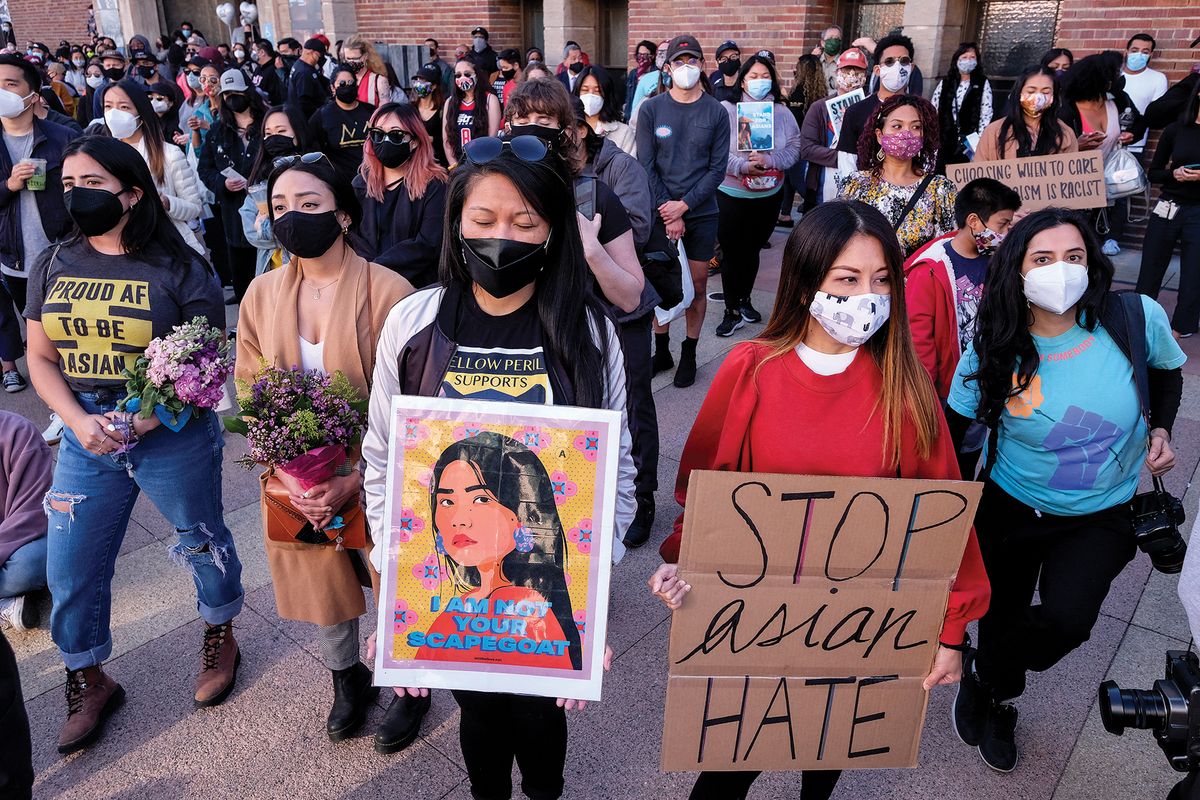A global movement against the radical rise in hate crimes against Asian people is now gathering momentum in the art world. Since the 18 March killing of eight people—including six Asian-American women—in Atlanta, Georgia, artists have been taking to the streets and the internet to spotlight the recent proliferation of physical and verbal attacks on ethnic Asians in the US as well as the long-standing hypersexualisation of Asian women.
Instigated in part by the characterisation of Covid-19 as the “China virus” by former US President Donald Trump, the scapegoating of China for the disease has reverberated into hostility towards Americans of Asian heritage, Chinese or not, in particular violence against elderly Asian Americans. The organisation Stop AAPI [Asian American and Pacific Islander] Hate has registered at least 3,795 attacks on ethnic Asians in the US between March 2020 and this February and the Center for the Study of Hate & Extremism at California State University, San Bernardino registered a year-on-year increase of 149% in 2020.
The current violence is an escalation of the othering of ethnic Asians in North America for over a century, and activists are now working to draw attention and redress the underlying histories as well as the current crisis.
Stop DiscriminAsian (SDA), a mostly American coalition of 17 arts professionals including the artists Anicka Yi and Kenneth Tam, promulgated a statement condemning the attacks and anti-Asian rhetoric; it has garnered more than 800 signatories. Since 30 March, nearly 700 put their names to a more pointed letter by the Asian and Diaspora Art Commune (ADAC), a group of eight mainland China-born American and European artists, curators and historians, criticising the art magazine ArtForum for its limited coverage of Asian artists and of the Stop Asian Hate movement compared with other social justice campaigns. ArtForum did not respond to the letter or to a request for comment from The Art Newspaper but ran a news article about the ADAC letter last month.
Hypersexualised racism
There has been a “history of anti-Asian racism in the US and in Europe for over 150 years,” ADAC tells The Art Newspaper. Besides American abuses such as the Chinese Exclusion Act of 1882, the burning of Santa Ana’s Chinatown in 1906, and the murder of Vincent Chin in 1982, there are the more recent attacks in Europe, such as the firebombing of an apartment building housing Vietnamese workers in Rostock, Germany in 1992, and the violent assault of six Chinese students in Gironde, France, in 2013.
The SDA statement says that, after the Atlanta murders, national media’s “quick acceptance and regurgitation of the white killer’s defence—that he was attempting to ‘eliminate’ sexual ‘temptation’… condones violence against women, particularly women of colour”. American “abuses of enslaved, indentured and immigrant women include the Page Act of 1875, which deliberately portrayed Asian women as prostitutes and banned migrants from ‘Oriental countries’. The hypersexualised racism directed against women in various Asian countries systematised through the US’s imperialist activities informs and shapes this form of bigotry today.” The activists also highlight the vitriol towards Asian women online, and that 68% of reported anti-Asian hate crimes in the US last year were aimed at women.
The ADAC, meanwhile, takes aim at the lack of media coverage of Asian and Asian-diaspora artists. Its eight initiators are prominent on the Asian art scene: Gu Qianfan, He Xiangyu, Danielle Shang, Li Zhenhua, Wang Xin, Weng Xiaoyu, Xu Wenkai (aaajiao) and Sammi Liu (a former editor at The Art Newspaper China).
Coverage and support of Asian and diaspora art communities has been sorely missing during this crisis, the group says, continuing the comparative invisibility of ethnic Asians in Western society as well as in “art history, institutions, galleries and critical discourses,” the group states.
They also criticise the fact that Western media coverage of shows in Asia are mostly by white Western artists; that they heavily cite white Western experts on Asia; they feature only a tiny coterie of big-name Asian artists; and they often romanise Asian names incorrectly.
Examples cited by the group of more relevant discussions, exhibitions and publications, include Weng Xiaoyu’s recent essay series about racial violence for the Guggenheim Museum, Wang Xin’s talk series “Asian American Perspectives” at the Whitney Museum of American Art, and recent shows by Moko Fukuyama and An-My Lê, whose work addresses Asian American identity. “The media must now do their part too”, the ADAC members say.


